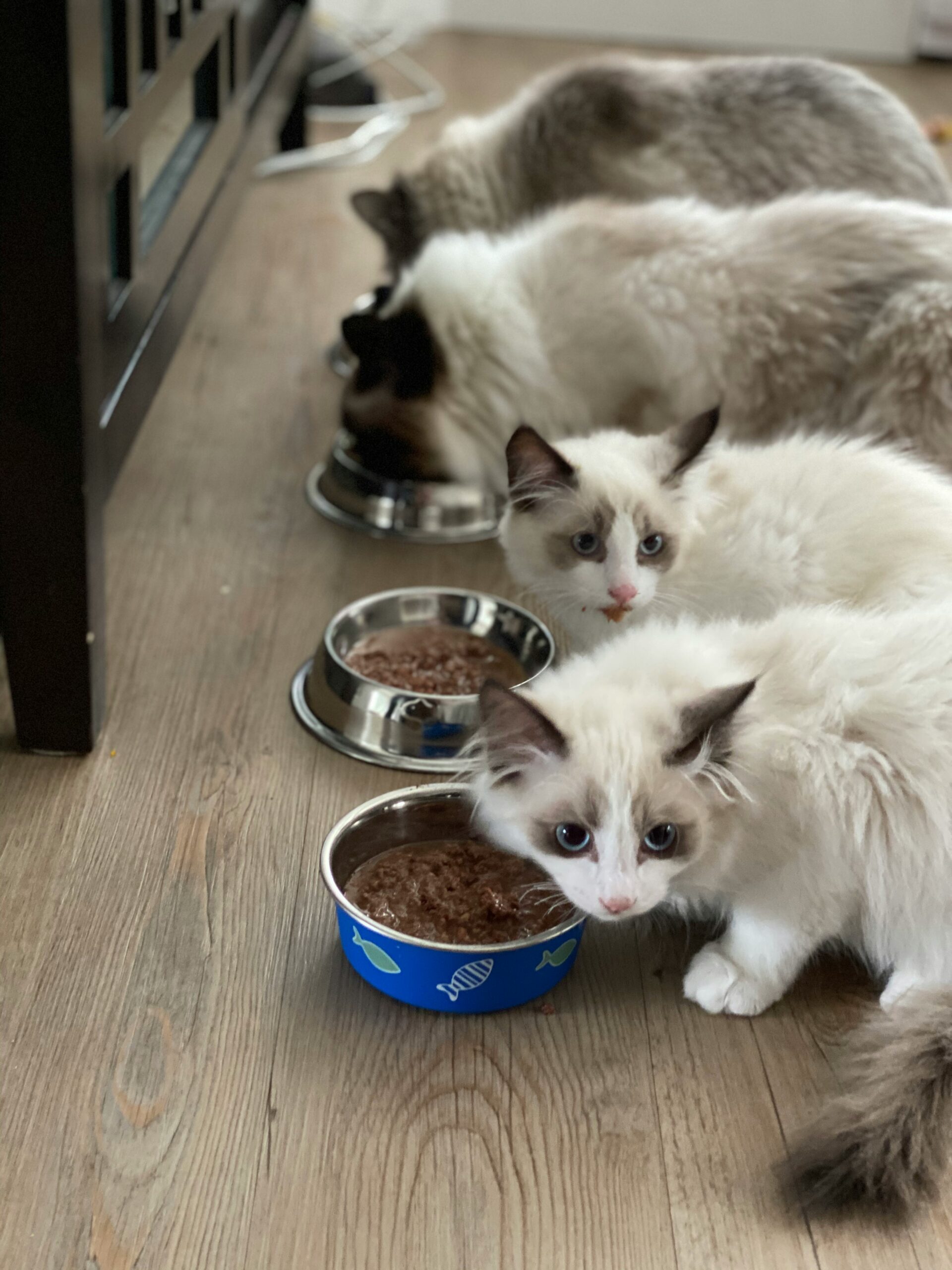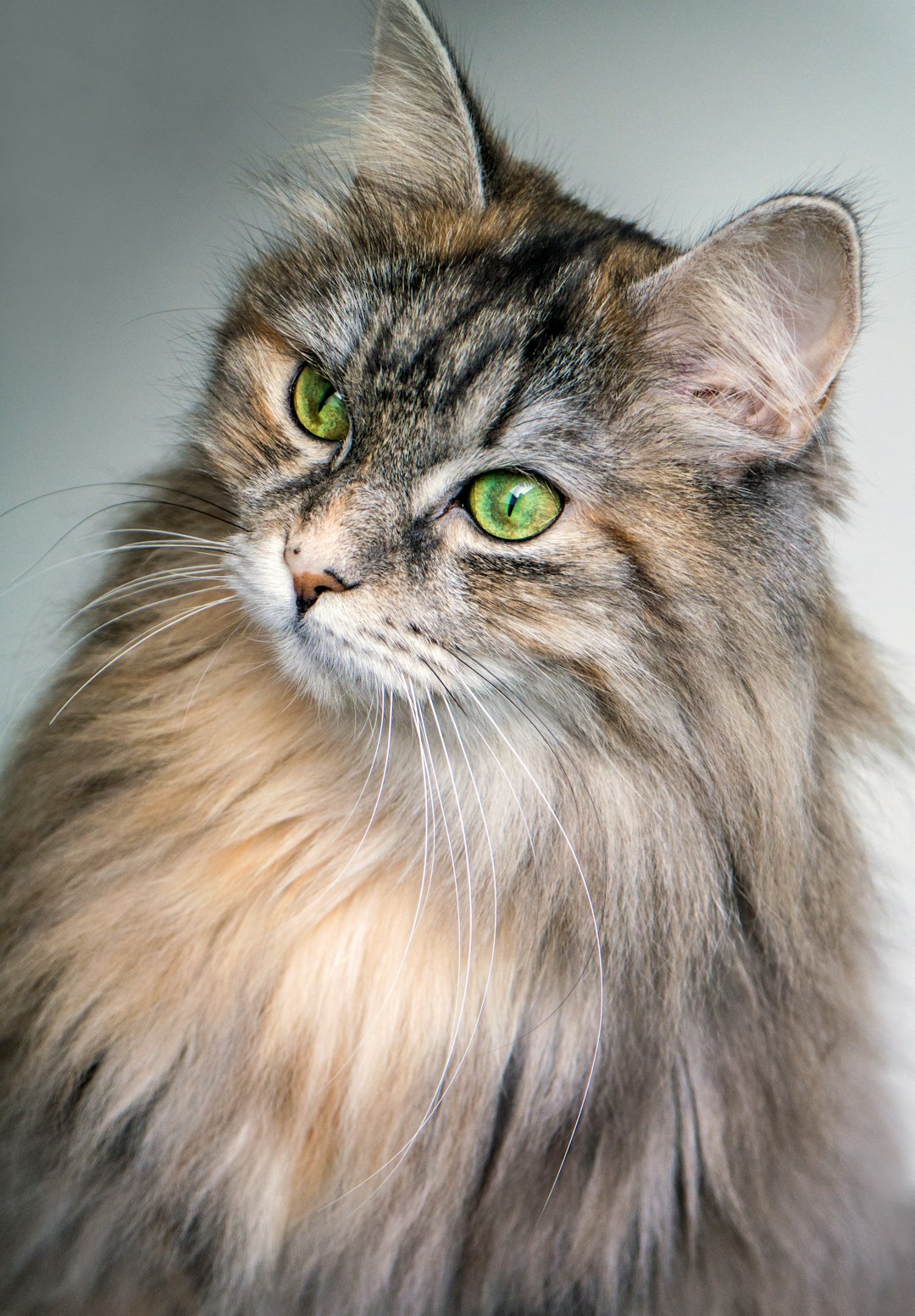As a devoted cat owner, you want the best for your furry friend, and preparing fresh cat food at home offers an excellent way to ensure a balanced and nutritious diet. Not only do homemade meals let you control each ingredient, but they also allow you to cater to your cat’s specific dietary needs. In this blog post, we will explore the benefits of homemade cat food, essential ingredients, and simple recipes to help you create delightful meals that promote your cat’s health and happiness. Let’s embark on this rewarding journey to enhancing your pet’s dining experience!
Benefits of Homemade Cat Food
Preparing fresh cat food at home offers numerous advantages, not only for your feline friend but also for you as a pet owner. Below are some key benefits of homemade cat food:
- Improved Nutrition: By controlling the ingredients in fresh cat food, you ensure that your cat receives a balanced diet. You can use high-quality proteins, healthy fats, and essential vitamins, tailoring meals to meet specific nutritional needs.
- Freshness: Homemade meals are free from preservatives and artificial additives commonly found in commercial cat food. This freshness contributes to a healthier diet and can enhance your cat’s overall well-being.
- Customization: You can easily cater to your cat’s unique preferences and dietary restrictions. Whether your cat has allergies, sensitivities, or simply dislikes certain ingredients, homemade fresh cat food lets you create recipes that suit their needs.
- Cost-Effective: While initial costs may seem higher, preparing fresh cat food can be more economical in the long run, as you can buy ingredients in bulk and reduce veterinary expenses through better nutrition.
- Bonding Time: The process of preparing meals can create an opportunity for bonding with your cat. Observing their reactions to different flavors can also help you craft meals they love.
By switching to homemade fresh cat food, you’re making a positive choice for your cat’s health and happiness.
Essential Ingredients for Cat Nutrition
Creating fresh cat food at home requires understanding the essential ingredients that contribute to a balanced feline diet. Here’s what you need to include to ensure your cat receives optimal nutrition:
- Proteins: Cats are obligate carnivores, which means they thrive on animal-based proteins. Incorporate lean meats such as chicken, turkey, or fish. These provide crucial amino acids necessary for muscle and tissue health.
- Fats: Healthy fats are vital for energy and coat health. Use sources like fish oil or chicken fat to enhance the nutritional quality of your fresh cat food.
- Carbohydrates: While not a primary energy source for cats, a small amount can provide fiber. Consider vegetables like carrots and peas, which can aid in digestion.
- Vitamins & Minerals: Essential vitamins and minerals maintain overall health. Key ingredients include:
- Taurine: An amino acid critical for heart and eye health; found in animal proteins.
- Calcium: Supports bone strength; provide through ground eggshells or bone meal.
- Vitamin E: Antioxidant properties; can be included via vegetable oils.
Comparison Table of Ingredients
| Nutrient | Source | Function |
|---|---|---|
| Protein | Chicken, Fish | Muscle & tissue repair |
| Fats | Fish Oil | Energy & coat health |
| Carbohydrates | Vegetables | Digestive health |
| Vitamins/Minerals | Supplements | Overall health & immunity |
By combining these ingredients, you ensure your cat receives a balanced diet that supports their health, all while enjoying delicious fresh cat food made right at home!
Understanding Cat Dietary Needs
To create a balanced diet for your feline friend, it’s crucial to understand their unique dietary needs. Unlike dogs, cats are obligate carnivores, meaning their diet predominantly consists of meat. Here are key factors to consider when preparing fresh cat food:
Essential Nutrients for Cats:
- Protein: Cats require a high-protein diet to maintain muscle mass and energy. Good sources include chicken, turkey, and fish.
- Taurine: This essential amino acid is crucial for heart health, vision, and reproduction. Meat sources like chicken and fish provide adequate taurine.
- Fats: Healthy fats supply energy and support skin and coat health. Look for fish oil or chicken fat in your fresh cat food recipes.
- Vitamins and Minerals: Cats need a range of vitamins, including A, B vitamins, D, and several minerals like calcium and phosphorus. Incorporating organ meats can help meet these needs.
Hydration:
- Water Intake: Cats generally get hydration from their food. When making fresh cat food, consider including ingredients with higher moisture content, like cooked fish or chicken broth.
Portion Control:
- Monitor your cat’s weight to prevent obesity. The caloric needs vary based on the cat’s age, size, and activity level. Generally, a guideline is about 20 calories per pound of body weight.
Providing your cat with well-rounded fresh cat food ensures they get the right nutrients for a healthy life. This understanding will guide you in preparing meals that align with their dietary requirements.
Safe Foods for Cats and Foods to Avoid
When preparing fresh cat food, selecting safe ingredients is crucial for your feline’s health. Many human foods are safe for cats, while others can be harmful or even toxic. Here’s a quick guide to help you make informed choices.
Safe Foods for Cats
- Lean Meats: Chicken, turkey, and lean cuts of beef provide high-quality protein.
- Fish: Salmon and tuna can be great treats in moderation, but ensure they’re cooked.
- Vegetables: Carrots, peas, and pumpkin are safe and provide essential nutrients.
- Eggs: Cooked eggs are a protein-rich food that many cats enjoy.
- Grains: Small amounts of cooked rice or oats can be included for fiber.
Foods to Avoid
- Onions and Garlic: These can cause anemia in cats, so keep them off the menu.
- Chocolate: Even small amounts are toxic to cats.
- Grapes and Raisins: These can cause kidney failure in some animals.
- Dairy Products: Many cats are lactose intolerant, leading to digestive issues.
- Caffeinated Foods: Coffee and tea can be harmful and should be strictly avoided.
Quick Comparison Table
| Food Category | Safe Foods | Foods to Avoid |
|---|---|---|
| Meat | Lean chicken/turkey | Processed meats |
| Fish | Cooked salmon | Raw fish |
| Vegetables | Carrots, peas | Onion, garlic |
| Grains | Cooked rice | Wheat and gluten |
| Miscellaneous | Cooked eggs | Chocolate, grapes |
By carefully choosing safe foods and avoiding harmful ones, you can create delicious and nutritious fresh cat food that keeps your cat happy and healthy.
Simple Recipes for Fresh Cat Food
Preparing fresh cat food at home allows you to know exactly what your feline friend eats. Here are two simple and nutritious recipes for you to try:
Recipe 1: Chicken and Rice Delight
Ingredients:
- 1 cup cooked chicken, shredded
- 1/2 cup cooked brown rice
- 1/4 cup carrots, finely chopped
- 1/4 cup peas
- 1 tablespoon chicken broth (low sodium)
Instructions:
- Mix the cooked chicken, brown rice, carrots, and peas in a bowl.
- Add chicken broth to moisten the mixture.
- Serve at room temperature to your cat.
Recipe 2: Tuna and Pumpkin Feast
Ingredients:
- 1 can tuna (in water, drained)
- 1/2 cup canned pumpkin (not pie filling)
- 1/4 cup cooked quinoa
- 1 teaspoon olive oil
Instructions:
- Combine the tuna, pumpkin, and cooked quinoa in a bowl.
- Drizzle with olive oil and stir gently.
- Ensure it’s cool before serving.
Tips for Fresh Cat Food Preparation:
- Keep it simple: Focus on high-quality protein sources.
- Portion control: Serve smaller amounts regularly to maintain freshness.
- Vary ingredients: Rotate proteins and vegetables to ensure a balanced diet.
Remember, always consult with a veterinarian to ensure your cat’s diet meets its specific nutritional needs. Homemade fresh cat food can be rewarding for both you and your pet!
Incorporating Supplements for a Balanced Diet
When preparing fresh cat food at home, it’s crucial to ensure your feline friend receives a well-rounded diet. While fresh ingredients provide essential nutrients, supplements can enhance your cat’s health by filling any nutritional gaps. Here’s how to effectively incorporate supplements for a balanced diet:
Key Supplements to Consider
- Taurine: An essential amino acid for heart and eye health. Cats cannot produce enough taurine, so supplementing is vital.
- Omega-3 Fatty Acids: Found in fish oil, these promote healthy skin and a shiny coat.
- Vitamins: Look for a high-quality cat-specific vitamin supplement to provide necessary vitamins like A, D, and E.
- Minerals: Calcium and phosphorus balance is critical. Consider bone meal or specific mineral supplements.
Tips for Supplementing
- Consult a Vet: Always discuss your cat’s dietary needs with a veterinarian before starting any supplements.
- Choose Quality Products: Opt for supplements designed specifically for cats to ensure proper dosages.
- Follow Guidelines: Use the recommended dosage on the supplement label and adjust based on your cat’s weight and health.
Sample Supplement Schedule
| Supplement | Recommended Frequency | Notes |
|---|---|---|
| Taurine | Daily (with food) | Mix into fresh cat food for best results |
| Fish Oil | Every other day | Pour over meals, keep fresh in fridge |
| Vitamins | Daily | Serve with main meals |
Incorporating these supplements into your fresh cat food ensures that your pet remains healthy, happy, and vibrant.
Storage Tips for Homemade Cat Food
Storing homemade fresh cat food properly ensures your feline friend enjoys nutritious meals over time. Follow these essential tips for optimal storage:
- Use Airtight Containers: Invest in high-quality airtight containers to keep out air and moisture, which can spoil your food quickly.
- Label and Date: Clearly label each container with the type of food and the preparation date. This helps you track freshness and avoid feeding expired meals.
- Refrigeration: Store fresh cat food in the refrigerator if you plan to use it within a few days. Generally, homemade cat food lasts about 3-5 days when refrigerated.
- Freezing for Longevity: For longer storage, freeze portions of fresh cat food. Use freezer-safe bags or containers and note the date frozen. Properly stored, it can last for 2-3 months.
- Thaw Safely: When you’re ready to feed your cat, thaw frozen food in the refrigerator overnight. This method retains flavor and nutrients.
- Reheat as Needed: If you choose to warm the food for serving, do so gently. Avoid using microwaves as they may create hot spots, which can burn your cat’s mouth.
By following these storage tips for fresh cat food, you can maintain the meals’ nutritional value and flavors, ultimately providing the best for your furry companion.
Feeding Guidelines and Portion Control
When it comes to serving fresh cat food, portion control is critical to maintaining your cat’s health. Proper feeding guidelines ensure that your feline friend receives the right amount of nutrients without overindulging. Here are some essential guidelines to consider:
- Know Your Cat’s Weight:
- Calculate your cat’s ideal weight based on their breed and size.
- Adjust portions accordingly, aiming for approximately 2-4% of their body weight in food daily.
- Divide Daily Portions:
- Split the total daily amount into 2-3 meals.
- This approach simulates a natural feeding schedule and can help prevent obesity.
- Use Measuring Tools:
- Invest in a kitchen scale or measuring cups.
- Accurate measurements ensure consistency in serving size and nutrient intake.
- Keep Track of Changes:
- Monitor your cat’s weight regularly.
- Adjust feeding amounts if your cat gains or loses weight unexpectedly.
- Consider Activity Levels:
- Active cats may require more food compared to less active companions.
- Tailor the portions based on your cat’s energy expenditure.
By adhering to these feeding guidelines, you can provide your cat with delicious and nutritious fresh cat food while maintaining their overall health. Consistency, attention to detail, and understanding your cat’s needs will lead to a happy and healthy feline companion.
Common Mistakes to Avoid When Preparing Cat Food
Preparing fresh cat food can be a rewarding experience, but it’s essential to avoid common pitfalls that could compromise your cat’s health. Here are some critical mistakes to steer clear of:
- Neglecting Nutritional Balance: Ensure that every meal provides a balanced diet. Cats require proteins, fats, vitamins, and minerals. Incorporate ingredients like meat, fish, vegetables, and appropriate supplements when making fresh cat food.
- Using Unsafe Ingredients: Not all foods are safe for cats. For instance, avoid onions, garlic, chocolate, and certain artificial additives. Stick to cat-approved ingredients to prevent toxicity.
- Ignoring Portion Control: Overfeeding can lead to obesity and related health issues. Use a kitchen scale or measuring cups to ensure your cat receives the right amount of fresh cat food based on its age, weight, and activity level.
- Inadequate Storage: Improper storage can lead to spoilage. Always refrigerate or freeze leftovers safely. Use airtight containers to retain freshness for longer periods.
- Failing to Rotate Ingredients: Cats can develop sensitivities to specific proteins. Rotate between different protein sources to avoid this issue, ensuring your cat enjoys a variety of nutrients from fresh cat food.
By avoiding these mistakes, you can create nourishing and delicious meals that keep your cat healthy and happy!
How to Transition Your Cat to Homemade Meals
Transitioning your cat to fresh cat food can be a rewarding process, but it requires patience and careful planning. To ensure a successful switch, follow these guidelines:
- Gradual Introduction: Start by mixing a small amount of fresh cat food with your cat’s current diet. Gradually increase the proportion of homemade food over 7-10 days. This method minimizes digestive upset and helps your cat adjust.
- Observe Reactions: Monitor your cat’s reaction to the new food. Look for signs of acceptance, such as eagerness to eat, and watch for any signs of gastrointestinal distress (vomiting or diarrhea). If any negative symptoms occur, slow down the transition.
- Consistency is Key: Offer fresh cat food at the same time each day. Cats thrive on routine, so maintaining a consistent feeding schedule helps them adapt to new meals.
- Encourage Exploration: Some cats may need encouragement to try new flavors and textures. To entice your cat:
- Offer a variety of recipes to find their favorites.
- Use warmth (room temperature) as it enhances the aromas.
- Incorporate a touch of your cat’s favorite treat to pique interest.
- Be Patient: Every cat is different, and some may take longer to adjust than others. If your cat shows resistance, don’t get discouraged. Continue offering the new food and allow them time to adapt.
Incorporating fresh cat food into your feline friend’s diet can lead to improved health and vitality, making the transition well worth the effort!



